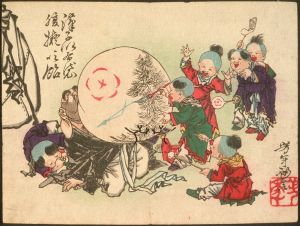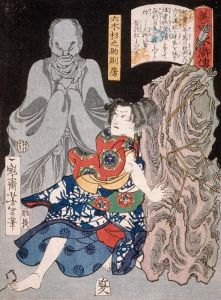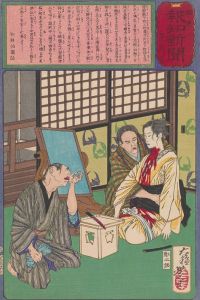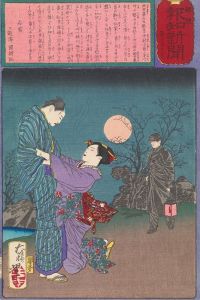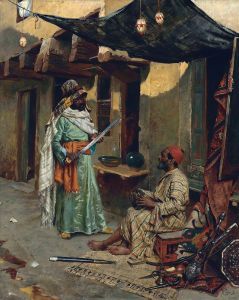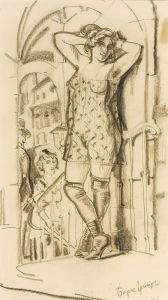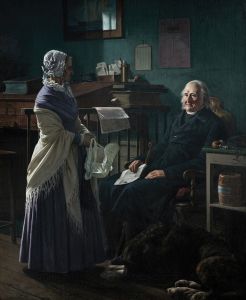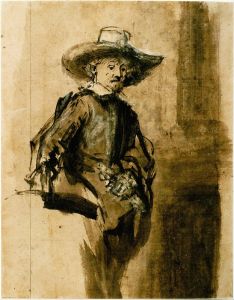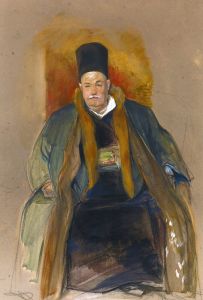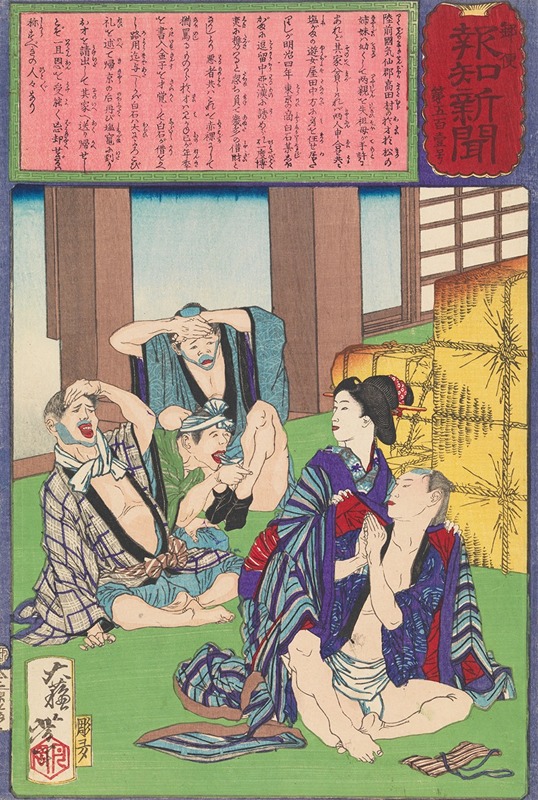
The Prostitute Osai of Shiogama Rescuing a Tokyo Merchant from Gamblers
A hand-painted replica of Tsukioka Yoshitoshi’s masterpiece The Prostitute Osai of Shiogama Rescuing a Tokyo Merchant from Gamblers, meticulously crafted by professional artists to capture the true essence of the original. Each piece is created with museum-quality canvas and rare mineral pigments, carefully painted by experienced artists with delicate brushstrokes and rich, layered colors to perfectly recreate the texture of the original artwork. Unlike machine-printed reproductions, this hand-painted version brings the painting to life, infused with the artist’s emotions and skill in every stroke. Whether for personal collection or home decoration, it instantly elevates the artistic atmosphere of any space.
"The Prostitute Osai of Shiogama Rescuing a Tokyo Merchant from Gamblers" is a woodblock print by the renowned Japanese artist Tsukioka Yoshitoshi, who is celebrated for his innovative approach to ukiyo-e, a genre of Japanese art that flourished from the 17th through 19th centuries. Yoshitoshi is often credited with revitalizing the ukiyo-e tradition during a time when it was in decline, and his works are noted for their dynamic compositions, psychological depth, and vivid use of color.
This particular print is part of Yoshitoshi's series "New Forms of Thirty-Six Ghosts" (Shinkei Sanjūrokkaisen), which was published between 1889 and 1892. The series is known for its exploration of supernatural themes, drawing on Japanese folklore, legends, and historical tales. Each print in the series typically depicts a scene involving ghosts, spirits, or otherworldly beings, often with a dramatic or eerie atmosphere.
In "The Prostitute Osai of Shiogama Rescuing a Tokyo Merchant from Gamblers," Yoshitoshi illustrates a narrative involving Osai, a prostitute from Shiogama, a town known for its scenic beauty and historical significance. The print captures a moment of tension and drama as Osai intervenes to save a merchant from Tokyo who has fallen into the clutches of gamblers. This act of rescue highlights themes of bravery and compassion, which are recurrent motifs in Yoshitoshi's work.
Yoshitoshi's depiction of Osai is notable for its attention to detail and emotional intensity. The composition likely emphasizes the contrast between the chaotic scene of the gamblers and the calm determination of Osai, showcasing Yoshitoshi's skill in conveying complex narratives through visual art. The use of color and line work in the print would be characteristic of Yoshitoshi's mature style, which often combines traditional ukiyo-e techniques with innovative approaches to storytelling and design.
The historical context of the print is significant, as it was created during the Meiji era (1868-1912), a period of rapid modernization and cultural change in Japan. During this time, traditional art forms like ukiyo-e were being challenged by new influences from the West, and artists like Yoshitoshi played a crucial role in preserving and transforming these traditions. His work often reflects a blend of old and new, capturing the complexities of a society in transition.
Yoshitoshi's prints, including this one, are highly regarded for their artistic quality and historical value. They offer insights into the cultural and social dynamics of Meiji-era Japan, as well as the enduring appeal of folklore and legend in Japanese art. Today, Yoshitoshi is celebrated as one of the last great masters of ukiyo-e, and his works continue to be studied and admired for their beauty, innovation, and narrative power.
"The Prostitute Osai of Shiogama Rescuing a Tokyo Merchant from Gamblers" remains an important example of Yoshitoshi's ability to blend traditional themes with a modern sensibility, making it a valuable piece for both art historians and enthusiasts of Japanese culture.





